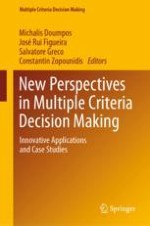2019 | OriginalPaper | Chapter
New Directions in Ordinal Evaluation: Sugeno Integrals and Beyond
Authors : Miguel Couceiro, Didier Dubois, Hélène Fargier, Michel Grabisch, Henri Prade, Agnès Rico
Published in: New Perspectives in Multiple Criteria Decision Making
Publisher: Springer International Publishing
Activate our intelligent search to find suitable subject content or patents.
Select sections of text to find matching patents with Artificial Intelligence. powered by
Select sections of text to find additional relevant content using AI-assisted search. powered by





